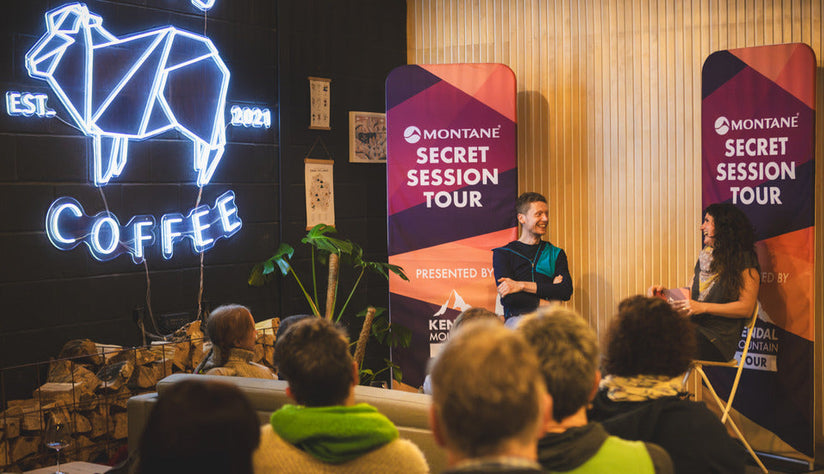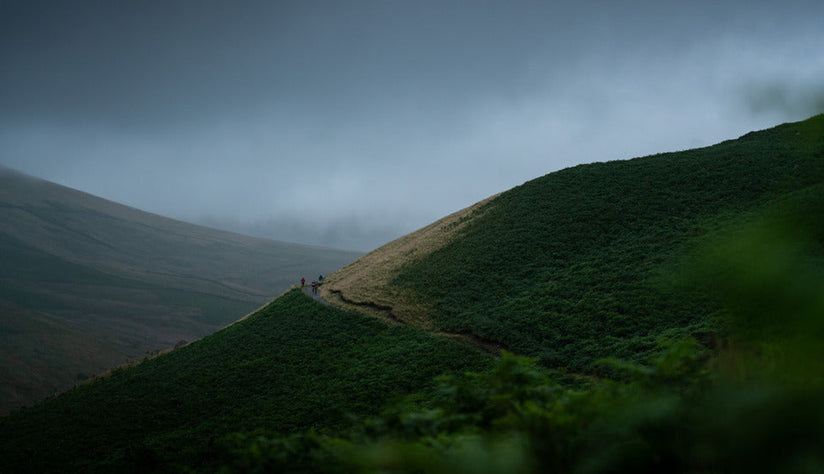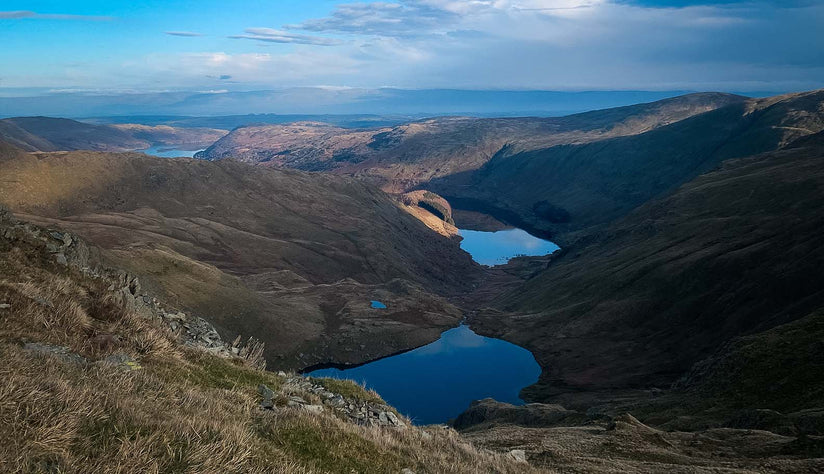Hot on the heels of our popular arctic ultra runs, including the Yukon and Lapland, we have another thrilling sub-zero race to keep you on the edge of your seats this spring! Buckle up for the Grand Traverse - which puts a fresh twist on our lengthier events, taking us high up into the mighty Rocky Mountains for a wild and rugged done-in-a-day ski race.
Starting in the small town of Crested Butte in Colorado, USA, participants will ski to the resort of Aspen, on a challenging 40-mile journey that climbs over 6,800 vertical feet. Despite being new to Montane this year, the Grand Traverse has been taking place for over 26 years (discover more on its fascinating heritage below) firmly establishing it as one of the most iconic ski races in North America. The Grand Traverse is also part of a suite of events hosted here, with a summer edition featuring mountain biking and running in September (though to many the ski race is considered the crown jewel!).
Feeling suitably excited? We caught up with local Crested Butte resident and former development director at the Grand Traverse’s hosting organisation, Crested Butte Nordic, Laura Puckett Daniels to find out more about the race’s fascinating history and to hear about her highlights of the route.
Born from humble beginnings
The origins of the Grand Traverse ski race are intrinsically linked to the local community of Crested Butte, home to around 2,000 residents. Nestled in the Rocky Mountains at 9,000ft, it starts snowing here in October and doesn’t really stop until May. Approximately 300 inches of snow falls here every year. This means Crested Butte endures an extremely long winter. Finding ways to help the residents get out to enjoy exercise and nature during this time is therefore essential.
Cue the Crested Butte Nordic Centre, a non-profit organisation with a simple mission to help locals access outdoor recreational fun, no matter what the weather. As a result, the Nordic Centre rents out cross-country skis and has developed and maintained a network of ski trails. Back in the 90s, the volunteers behind this were eager to raise funds to help keep this essential community lifeline running. One of the ideas brainstormed was to put on a ski race - an opportunity to get everyone together and attract new people to the region.
With an idea conceived, the team began plotting how to pull off such an event and, most importantly, a route that would lure people in. Significantly the area was founded by miners, and the Rocky mountains had lots of postal routes where mail was delivered by ski to the mining villages that popped up. It is one of these postal routes that the Grand Traverse route is based upon, a journey from Crested Butte to the much larger (and flashier) resort town of Aspen.
“We are about 40 miles from the resort town of Aspen, as the crow flies. In between is rugged, high Alpine terrain. To get there by road is much longer, around 200 miles - this is the only way to reach Aspen if you want to avoid the winter ice and snow. The Grand Traverse route takes the crow’s path, with participants traversing unspoilt mountain wilderness. ” Laura Puckett Daniels, Former Crested Butte Nordic Development Director

A uniquely challenging and addictive race
Skimo is shorthand for ski mountaineering and is the type of skiing that participants in the Grand Traverse undertake on the race. In its purest form it’s all about travelling fast and light in the mountains - utilising a variety of ski skills to help you traverse a mountain pass. This involves lots of uphill skiing, the opposite of what most people associate with this sport (and actively look to avoid on a ski holiday!). To complete the Grand Traverse, all racers must have strong ski ability in a variety of disciplines - including downhill Alpine ski skills, as well as cross country. In short, this is not your typical ski race.
Unlike the popular resort of Aspen where the race finishes, the terrain the race traverses is incredibly wild - you’ll find very little phone signal here! For participants this is a big part of what attracts them to the Grand Traverse - the opportunity to take on a remote backcountry ski race. For many it is their only opportunity to be out in this kind of wild space over winter. To ski completely off the beaten track and survive an extreme environment. It’s seemingly what draws so many to take on the event year after year. One such enthusiast, Pat O’Neill, has done it every single year. The 2022 edition was his 24th race.
Due to the extreme nature of the course, participants are required to ski as a pair for their own safety. Racers also need to carry a shelter with them, alongside a beacon, shovel and heat source. In the course of the race’s history snowstorms have been known to roll in and racers have needed to take shelter to protect themselves. They also benefit from the support of a fully qualified avalanche team and emergency medical teams.
“For those coming back every year it’s a little bit like gambling. Because of the winter, the conditions are always different, which makes it very special and always keeps us on our toes.”
Route highlights
Setting the scene for an epic journey, The Grand Traverse kicks off at midnight in Crested Butte. Racers on the start line are joined by a local minister donned in a huge robe and cap, who gives a blessing - it’s a powerful moment that’s become a key race tradition. Once the blessing is complete, a gun goes off to announce the official start of the race with each pair powering off into the dark wilderness on their journey towards Aspen.
The first section of the race is all carried out under cover of darkness as racers navigate a wide open river valley and remote national forest. There are course marshals along the route and glow sticks on bamboo markers to help guide the way. Several checkpoints along the way must be reached within a certain time to allow racing pairs to continue onwards, the first of which is the East River Checkpoint at 4 miles in. From here the racers tackle their first steady climb to 2 more checkpoints, before taking on a sustained climb up to 12,000ft, with nothing either side of them other than jagged, rocky peaks!
The pinnacle of the Grand Traverse is the lofty Star Pass checkpoint (approx. 17 miles in) which racers must reach by 7AM to proceed. It’s the highest point on the course and where a dedicated Avalanche team is located (this is coincidentally the most treacherous part of the route). In some years, depending on conditions, the decision is sadly made to ‘reverse the route’ here for the participants’ safety and they must ski back to Crested Butte, rather than continuing on to Aspen. All being well, the pairs can push onwards skiing downhill into the basin. Here they are greeted by Geo, one of the original GT racers. Nowadays he’s the keeper of another iconic race tradition - Geo’s bonfire. The burning light helps guide skiers on their way where they’ll often be greeted by whiskey. But the race is far from over here. Beyond lies several more ups and downs to traverse on Alpine terrain. This is an exposed and open part of the course, up above the treeline.
About two thirds into the race is often everyone's breaking point - another slow and steady climb known as Richmond Ridge. At mile 27, racers hit the notoriously rowdy Barnard checkpoint - another popular pit-stop that often feels a bit like a party. Ski pairs can only stay here for 20 minutes… but many wish to stay longer! After this is the final push towards the finish line in Aspen - with still some undulations to come. As racers enter the Aspen Mountain ski area the big descent begins, with approximately 3,200 ft of elevation loss over 3 miles. Aspen feels world’s away from the small town of Crested Butte and racers enjoy pristine groomed trails on their long downhill, before finally hitting the finish line on the high street.
“The finish line is another GT race highlight with families, friends, pets, cow bells, beers and lots of emotions. There is relief, pride, tears…even anger at how hard and painful the course was. But ultimately joy and accomplishment. It’s a very special moment.”

GT legends
Over the years the Grand Traverse has attracted hundreds of hopeful pairs to take on the challenge! As the race has evolved, so has the equipment participants use to tackle the GT. Advances in ski technology mean it is much more attainable to more people. Back in the 90s, Skimo didn’t really exist in the States, with everyone taking part on cross-country skis. Since then, people now take part on skis that help them to tackle the uphills and downhills much faster. As a result the Grand Traverse is now seeing record breaking figures - where previous winners would conquer the route in around 8.5 hours. In 2021, the winners came in just under 6 hours - finishing in the dark. Other participants can take up to 17 hours to complete this epic course.
Everyone who takes part has their own unique story and reason for taking on the challenge - whether they’re looking to push their physical limits, battle a personal demon, conquer records …or they’re simply eager to get off the beaten track and try something fun during the winter months. The Grand Traverse attracts a wide range of people, from world-class skiers to adventure racers, multi-sport athletes and people who just love to climb mountains and test their bodies in different ways.
Alongside regular Pat (mentioned earlier) the race has seen hundreds of people line up to try the physically demanding 40-mile journey. Noteworthy mentions go to the mayors of Crested Butte and Aspen, who decided to race together (in suits) as a proclamation of their unity and sister-town status. Aron Ralston, a climber who saved his life by cutting off his hand after it became trapped by a boulder (more widely known as the subject of the critically acclaimed Danny Boyle film, 127 hours), has also taken on the challenge several times. And for those who needed any more convincing that this is an extremely challenging event, one racer famously claimed it was: ‘like climbing Everest, but without the oxygen’. Yikes.
“You don’t need to be a pro skier to take part, we’ve had plenty of ‘ordinary people’, including local teachers, get involved over the years. The Grand Traverse is open to everyone - so long as you are fit, prepared to move for 12+ hours, able to survive the winter elements and have some wilderness travel experience.”
Feeling excited?
Discover more about the Grand Traverse race on our dedicated event HUB page. You can also keep up to date with all the action on the 01-02 April by heading over to our instagram account.















